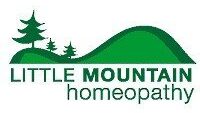
Type 2 diabetes is the most common type of diabetes. A combination of proper diet, , exercise, and classical homeopathic treatment is an effective solution for this type of diabetes. In order for treatment to be effective, an appointment should be made at the clinic.
Type 1 diabetes (insulin dependent or juvenile diabetes) is more rare and serious than Type 2 diabetes. People with Type 1 diabetes should not attempt to discontinue insulin while under homeopathic treatment. However, homeopathy can stabilize the blood sugars and improve the overall health and quality of life of Type 1 diabetics. Also note that homeopathic medicines can be taken safely along with your pharmaceutical medications, including insulin.
Proper diet and exercise plays a key role in the treatment and management of diabetes. However, some people eat right and exercise but they still cannot stabilize their blood sugars. Homeopathic treatment is very effective in these types of cases. The homeopathic remedy will help balance the blood sugar levels naturally without side effects.
Homeopathy can also help treat and prevent complications from diabetes, such as neuropathy and nephropathy.
Scientific Studies: Homeopathy for Diabetes and Diabetic Polyneuropathy
Abstract
OBJECTIVES: To evaluate homeopathic treatment in the management of diabetic distal symmetric polyneuropathy.
METHODS: A prospective multi-centric clinical observational study was carried out from October 2005 to September 2009 by Central Council for Research in Homeopathy (CCRH) (India) at its five institutes/units. Patients suffering from diabetes mellitus (DM) and presenting with symptoms of diabetic polyneuropathy (DPN) were screened, investigated and were enrolled in the study after fulfilling the inclusion and exclusion criteria. Patients were evaluated by the diabetic distal symmetric polyneuropathy symptom score (DDSPSS) developed by the Council. A total of 15 homeopathic medicines were identified after repertorizing the nosological symptoms and signs of the disease. The appropriate constitutional medicine was selected and prescribed in 30, 200 and 1 M potency on an individualized basis. Patients were followed up regularly for 12 months.
RESULTS: Out of 336 patients (167 males and 169 females) enrolled in the study, 247 patients (123 males and 124 females) were analyzed. All patients who attended at least three follow-up appointments and baseline curve conduction studies were included in the analysis.). A statistically significant improvement in DDSPSS total score (p = 0.0001) was found at 12 months from baseline. Most objective measures did not show significant improvement. Lycopodium clavatum (n = 132), Phosphorus (n = 27) and Sulphur (n = 26) were the medicines most frequently prescribed. Adverse event of hypoglycaemia was observed in one patient only.
CONCLUSION: This study suggests homeopathic medicines may be effective in managing the symptoms of DPN patients. Further studies should be controlled and include the quality of life (QOL) assessment.
Researchers at the University of Verona in Italy designed this observational study to compare the effects of homeopathic therapy with conventional drug therapy for diabetic neuropathy. Over a 12 month period, 32 patients treated with homeopathy and 29 patients given conventional drug therapy were assessed for clinical symptoms and quality of life at baseline, 6 months and 12 months after beginning treatment. Improvement from baseline polyneuropathy symptoms was noted in both groups but only those treated homeopathically reached outcomes that were statistically significant. Both groups experienced improvements in blood pressure and body weight as well as levels of fasting blood glucose and glycated haemoglobin. In addition, only those in the homeopathy group noted an improvement in quality of life scores over the period of the study. It was also noted that homeopathic treatment was more economical than the conventional drug alternative.
Abstract
BACKGROUND: Homeopathy is a holistic method of treatment that uses microdoses of natural substances originating from plants, minerals, or animal parts. Syzygium jambolanum and Cephalandra indica are used in homeopathy for treatment of type-2 diabetes. However, the molecular mechanisms responsible for such effects are not known.
METHODS: Homeopathic preparations of S. jambolanum and C. indica in mother tincture, 6c and 30c were used to examine the molecular mechanism of antidiabetic effects in the skeletal muscle of rats with high fat and fructose-induced type-2 diabetes mellitus. After 30 days treatment, fasting blood glucose, serum insulin and insulin signaling molecules in the skeletal muscle (gastrocnemius) were measured.
RESULTS: Diabetic rats showed a significant decrease in serum insulin and lipid profile as well as low levels of insulin receptor (IR), v-akt murine thymoma viral oncogene homolog (Akt), p-Akt(ser473) and glucose transporter-4 (GLUT4) protein expression (p < 0.05) with a significant increase in fasting blood glucose level (p < 0.05) compared to the control group. Treatment with homeopathic remedies significantly increased the serum insulin and expression of these proteins (p < 0.05) with a significant decrease in fasting blood glucose (p < 0.05) compared to diabetic rats.
CONCLUSIONS: In the present study homeopathic preparations of S. jambolanum and C. indica, including ultramolecular dilutions exhibit antidiabetic effects, improving insulin action through activation of insulin signaling molecules in skeletal muscle of type-2 diabetic rats.
Case Examples: Homeopathy for Diabetes
Case 1: 5 year old girl
Diabetes known to be present for two years; on strict diet. Urine tested for sugar by mother every two days, medium amount at first, a trace by Jan., then disappearing altogether until March when medium amount again for a few days and sugar free by the 31st to remain so.
She was on a general diet after the first few months. This child had little endurance at first, could not keep going with other children, could not stay in kindergarten; looked sallow, weak, had a heart murmur. She had a strong tendency to prolonged bronchitis with high fever, then recuperation. She was irritable, unstable, extremely nervous, could not keep still, biting fingers.
Her father had one tubercular lesion in lung before she was born. Taking this inheritance into consideration along with the symptoms, treatment was started with Tuberculinum 10M., and continued with Lycopodium in a series of potencies.
She grew to be quite vigorous though still developing high fever on slight provocation. I hear she is very well.
Case 2: 3 year old girl (sister for the former patient)
Began treatment at the same time. Has had diabetes all her life; urine sugar free on strict diet but returns if she has any starch or sugar. By January, , on a much more general diet, urine was sugar free or nearly so. By the next September had been sugar free for many weeks and remained so.
This child was given Tuberculinum at first also, but later had Pulsatilla and then Natrum mur., as her symptoms ran to catarrhal troubles with ear inflammation, and to digestive disturbances.
She has always been stronger and more even tempered than her sister.
Case 3: 62 year old male
Degeneration of macula lutea, both eyes, since five years; vision dim, worse in a bright light. Process seemed to be checked by Nux vomica. Mother, 82, and son, 35, have the same trouble. Younger son died of diabetes at fourteen years.
Weakness with perspiration. Tenderness of buttocks; hurts to sit. Spells of melancholy. Phos. ac. 1M.
June 17. Much better, more energy. Pain in buttocks better. Nov 4. Phos. ac. CM. Jan. 8, Phos. ac. CM. April 6. Phos. ac. CM. Sept. 8. Phos. ac. MM.
Sept. 15. Much stronger, says last medicine acted like magic.
Nov. 9. Sugar 0.75%, gaining weight and energy. March 1. Better in every way, sugar free if he avoids starches and foods containing cane sugar; allowed honey, pure maple or corn syrup. This case never took insulin.
Case 4: 50 year old male
Not well for several months.
June 15 Sugar formed in urine ten weeks ago, taken insulin daily since. Amount of sugar in urine now 3.6%. Lost twelve pounds in the last month. Aversion to sweets. Pain in lumbar region 3 p.m. Syzygium 12X. three times a day for seven days. Insulin discontinued.
Aug. 2. Sugar free. Pain in back gone several weeks ago.
Aug. 23. Feeling fine. Has gained weight. Sept. 6. Sugar free. Losing weight again. Hunger. Diarrhea from milk or sour foods. Sulph. 1M.
Nov. 8. Gained weight; seems perfectly well. March 24, 1941. Still perfectly well.
